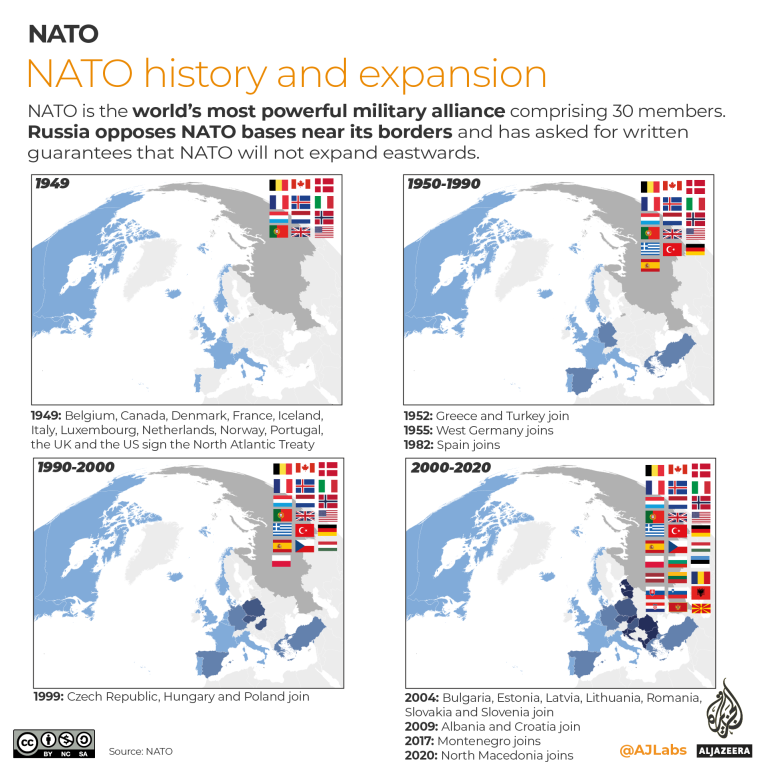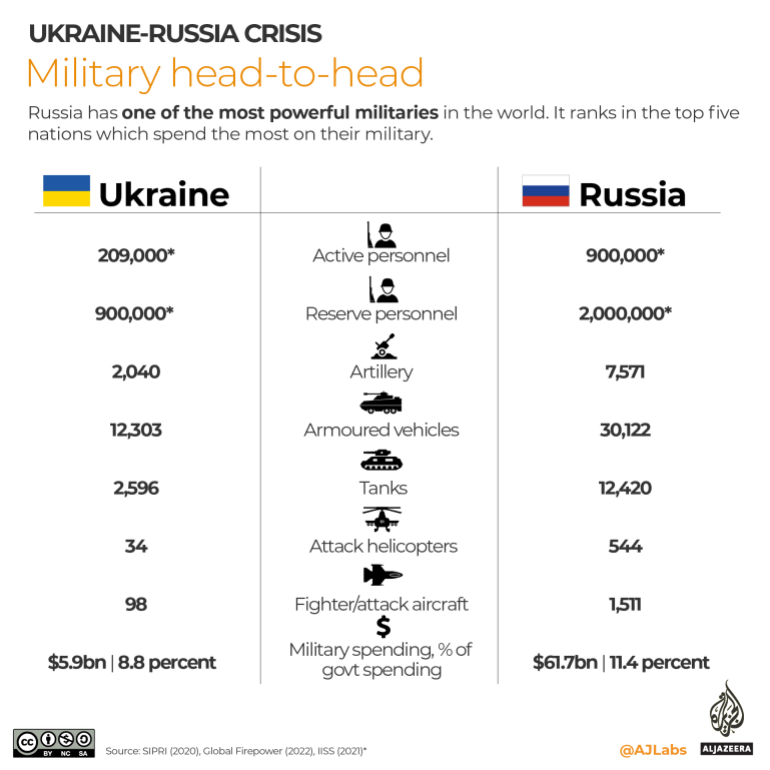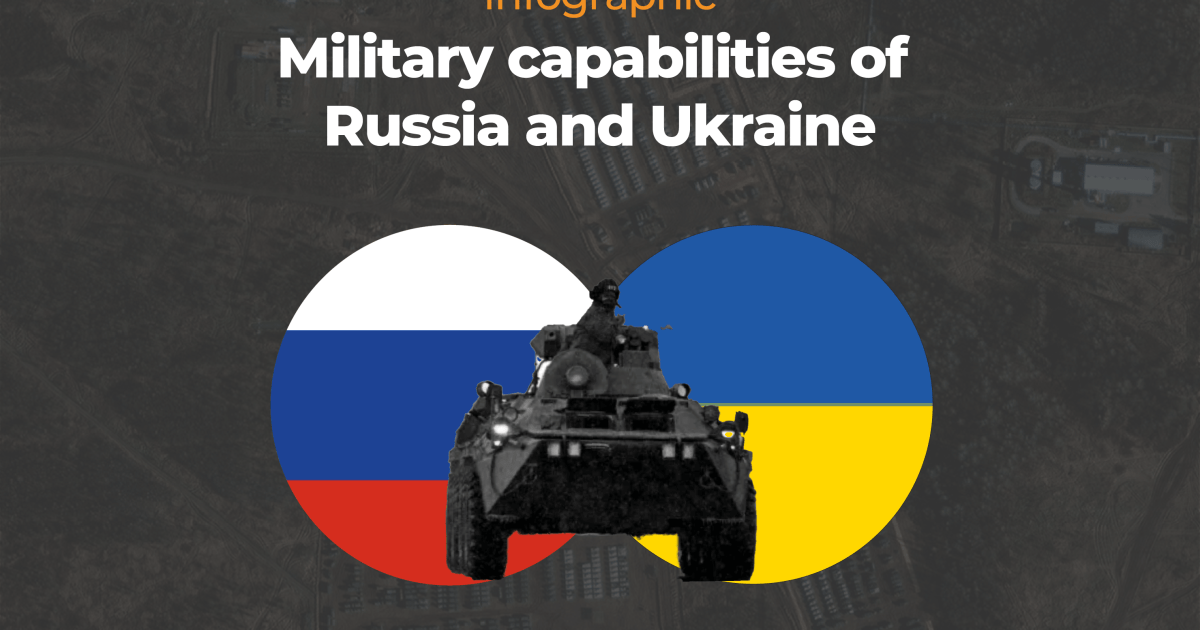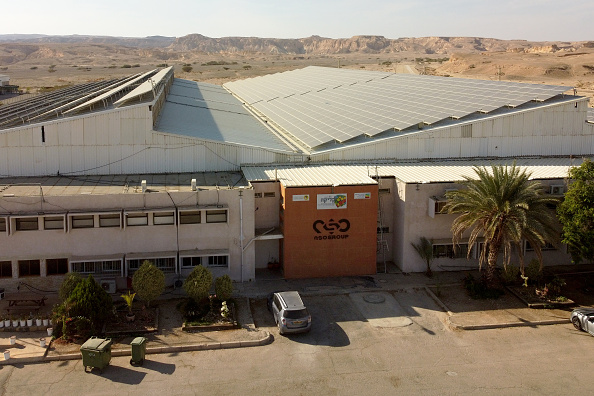Infographic: Military capabilities of Russia and Ukraine | Infographic News
The threat of conflict looms in Eastern Europe with more than 100,000 Russian troops amassed along the border with Ukraine.
The US military said on Monday it has put up to 8,500 troops on alert, ready to deploy to Eastern Europe potentially at very short notice should NATO activate a rapid response force.
Following last week’s high-stakes talks between US Secretary of State Antony Blinken and Russian Minister of Foreign Affairs Sergey Lavrov, Washington is expected to give a written reply to Russia’s security demands this week.
Russia denies planning an attack, but this has done little to ease fears. Cautionary measures are being taken as some UK and US embassy staff are being withdrawn from Ukraine.
In the following series of infographics, we explain how we got here and visualise the latest events on the ground.
Russia and Ukraine at a glance
Russia and Ukraine are the two largest countries in Europe. The neighbours were part of the 15 Soviet republics that made up the USSR. Following the collapse of the Soviet Union in 1991, Ukraine became an independent country and distanced itself from Russia.
In March 2014, following months of anti-government protests in Ukraine that saw a Kremlin-friendly leader removed from power, Russia invaded and annexed the Crimean Peninsula. A month later, pro-Russian separatists began capturing territory from the Donetsk and Luhansk regions of eastern Ukraine. The ongoing fighting there has killed more than 14,000 people, according to Kyiv, and displaced millions.
 (Al Jazeera)
(Al Jazeera)Timeline from Crimea to now
The graphic below highlights some key milestones since Russia annexed Crimea from Ukraine in 2014.
 (Al Jazeera)
(Al Jazeera)Where are Russian troops stationed?
There are now an estimated 100,000 troops stationed along the Ukraine border with an estimated 20,000 troops stationed near Donetsk and Luhansk provinces.
In addition, military drills between Russian and Belarussian troops are expected to begin in the coming weeks as part of ‘Allied Resolve’ exercises. Russia has already sent military forces and two battalions of S-400 surface-to-air missiles to Belarus.
Deputy Russian Defence Minister Alexander Fomin told the Interfax news agency: “The goal of the exercise is to fine-tune the tasks of suppressing and repelling external aggression during a defensive operation, countering terrorism and protecting the interests of the Union State.”
 (Al Jazeera)
(Al Jazeera)Possible invasion paths
Diplomatic talks have reached a stalemate. If diplomacy fails to ease the current impasse, Western powers fear that Russia could invade Ukraine at any time. According to analysis by the Center for Strategic Studies (CSIS), Russia may advance via three possible routes depending on the Kremlin’s aims.
 (Al Jazeera)
(Al Jazeera)Northern Route
Russian forces could make advances towards Kyiv from the north, and if Belarus is amenable to the use of its road and rail systems, Russian troops could proceed into Ukraine from Mazyr, Belarus.
Central Route
Russia can also send troops from the Donetsk ‘republic’ towards Zaporizhzhya and Dnipro to expand its boundaries westwards.
Southern Route
If Russia seeks to secure freshwater supply for Crimea and block Ukraine’s access to the sea, it could make an advance from the south towards Kherson while armed forces advance towards Melitopol to meet with troops along the coast of the Sea of Azov. Russia may wish to create a land bridge to Crimea which would involve seizing the port of Mariupol.
Putin and NATO’s eastward expansion
NATO is the world’s most powerful military alliance comprising 30 members and a budget of 1.56 billion euros.
Founded in 1949, the North Atlantic Treaty Organization was initially created to curb Soviet expansion.
Russia opposes NATO bases near its borders and has asked for written guarantees that NATO will not expand eastwards. One of the Kremlin’s central demands is that Ukraine never be allowed to join NATO – a move it considers a red line.
Ukraine has expressed interest in joining NATO and in September 2020, Zelenskyy approved a security strategy which laid foundations for a partnership with NATO with the ambition of membership.
 (Al Jazeera)
(Al Jazeera)Military head-to-head
Russia has one of the most powerful militaries in the world. It ranks in the top five nations which spend the most on their military.
In 2020, Russia spent $61.7bn on its military which accounted for 11.4 percent of government spending. In comparison, Ukraine spent $5.9bn on its military or 8.8 percent of government spending according to the Stockholm International Peace Research Institute (SIPRI).
Moscow has already deployed weapons within striking distance of Ukraine, including Iskander short-range ballistic missile systems, rocket launch systems, battle tanks and towed artillery.
A number of countries have sent military equipment to Ukraine, including Javelin anti-tank missiles from Lithuania and Stinger anti-aircraft missiles from Latvia and Lithuania. Kyiv is also using Turkish-made Bayrakhtar drones for reconnaissance.
On Sunday, Ukraine received a second shipment of weapons from the US as part of a $200m (£147.5m) defensive package approved by President Joe Biden in December.
 (Al Jazeera)
(Al Jazeera)




Pingback: earn passive income
Pingback: Stanozolol Kaufen
Pingback: Oregon mushroom dispensary
Pingback: crumpets disposable
Pingback: atlantis truffles online,
Pingback: how is crystal meth manufactured